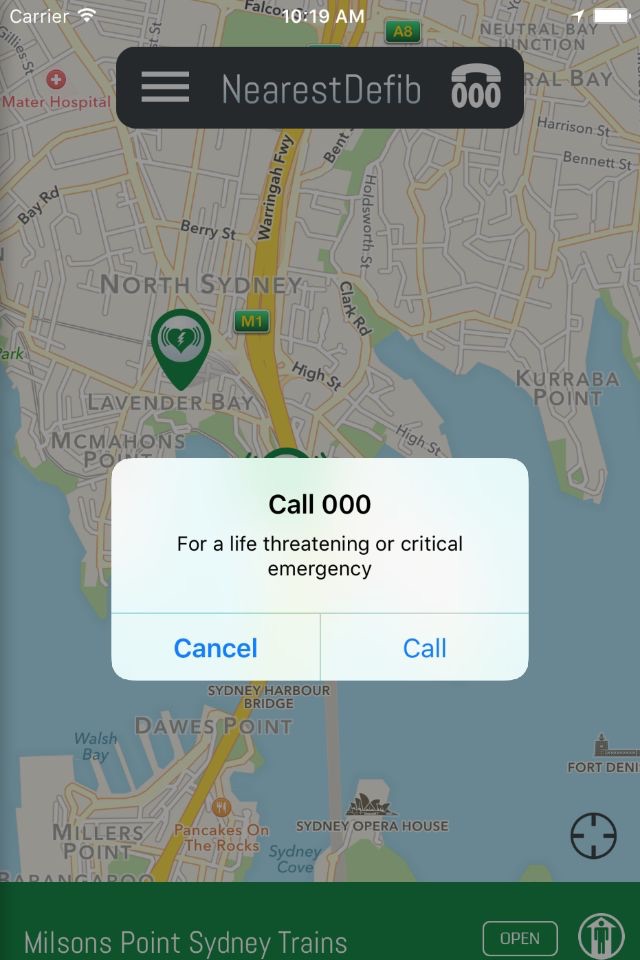
Nearest Defib app for iPhone and iPad
Developer: 360 Entertainment
First release : 08 Mar 2017
App size: 13.98 Mb
The Nearest Defib App allows users to pinpoint the location of publically accessible Automated External Defibrillators (AED) closest to their current location based on a users smartphone GPS feature.
The Cause of Sudden Cardiac Arrest
Sudden Cardiac Arrest is often misunderstood as a heart attack. A heart attack is a plumbing problem where the heart is blocked, causing heart muscle to die.
heart
Sudden Cardiac Arrest occurs when the hearts electrical system malfunctions; causing rhythms that is rapid (ventricular tachycardia) or chaotic (ventricular fibrillation) or both. This irregular heart rhythm (arrhythmia) causes the heart to suddenly stop beating in any coordinated manner. The heart muscle quivers or fibrillates rather than pump blood.
Vital organs are immediately deprived of oxygen, causing the victim to collapse. Brain death and irreversible damage begin in four to six minutes after someone experiences cardiac arrest.
While heart attack victims typically experience symptoms prior to an emergency, around 50% of sudden cardiac deaths occur without prior signs or symptoms. Commonly the signs of a Sudden Cardiac Arrest are only apparent at the moment of a full on emergency. Those signs include:
Sudden collapse
Loss of consciousness
No breathing
Loss of pulse
No sign of life
Unfortunately even with a 10-12 minute ambulance response time, the best chance for survival lies in a bystander’s recognition of the signs, the availability of an AED nearby. Acting quickly the use of an AED by responders at the scene could terminate the chaotic ventricular rhythms and allow the heart to restore itself to a normal pulse.
Because more than 80% of Sudden Cardiac Arrests happen in homes or public places, outside of a hospital setting, victims are caught out of reach of a rapid defibrillation that is unless you have an AED.
The Chain of Survival
Early Access: Recognise an emergency and call 000 immediately.
Early CPR: Begin Cardiopulmonary Pulmonary Resuscitation (CPR) immediately
Early Defibrillation: Use the Automated External Defibrillator (AED) ASAP
Early Advanced Care: Transfer to the paramedics Care.
The Chain of Survival is only as strong as its’ weakest link and unfortunately, Early Defibrillation is not the strongest link.
While CPR can extend the window of opportunity for responders to arrive and defibrillate the heart, the true solution is in deployment of AEDs and empowering bystanders to be the hero. A recent AED program deployed at the Melbourne Cricket Ground has resulted in an 80% survival rate. Reducing the time to defibrillation through widespread access of AEDs is the only way to reduce our dismal survival rate.



